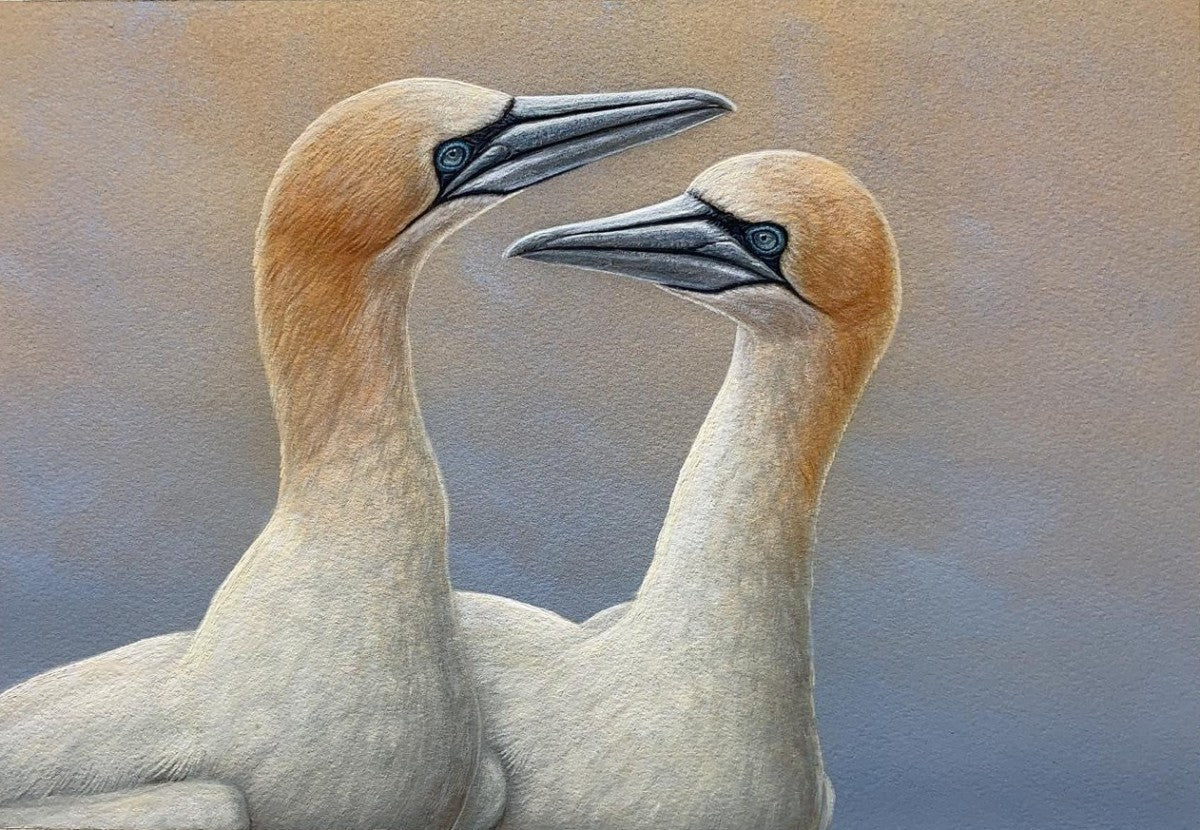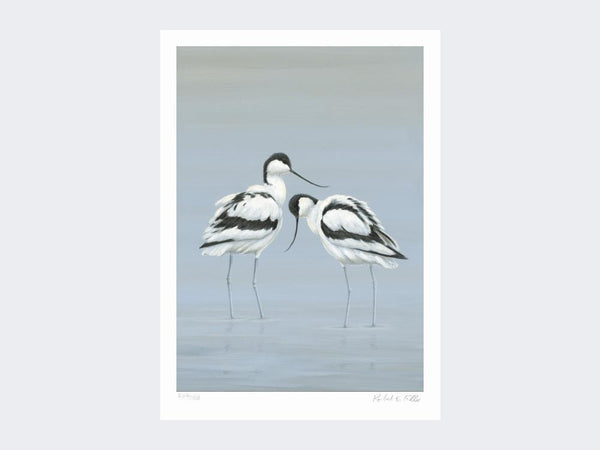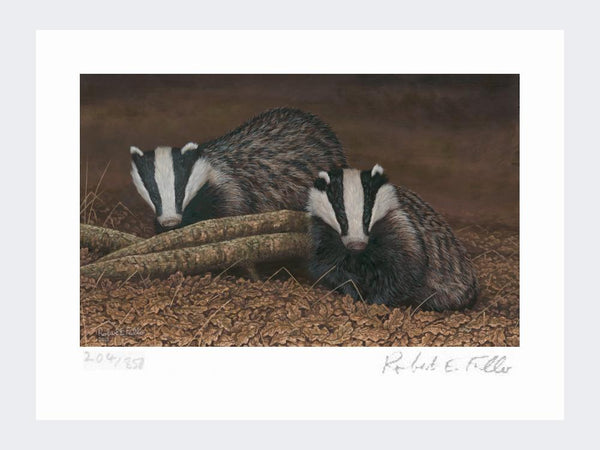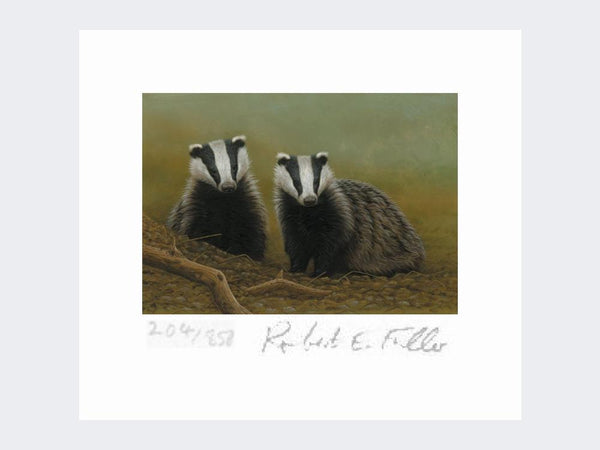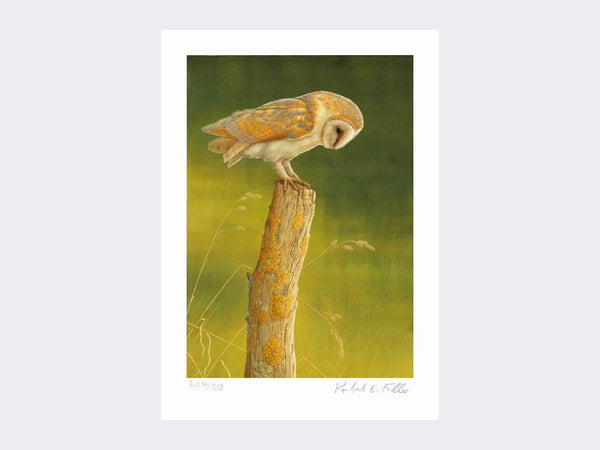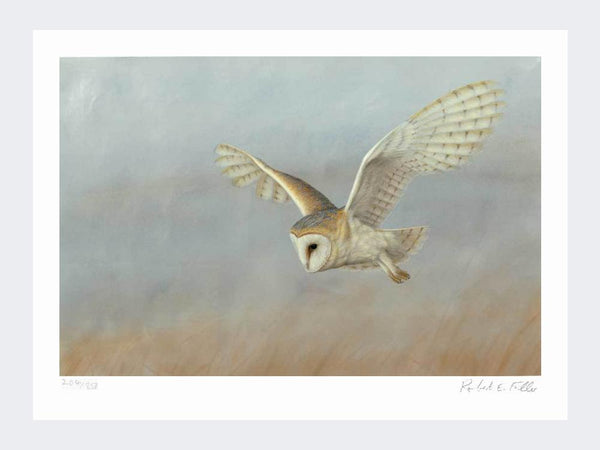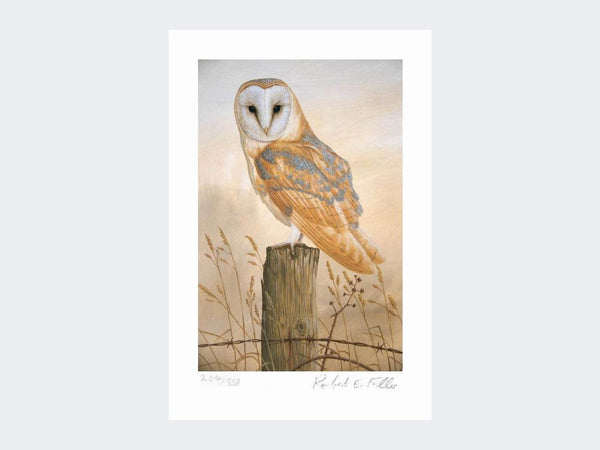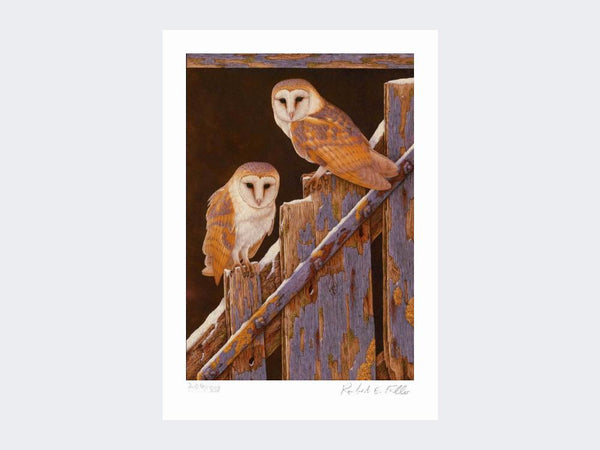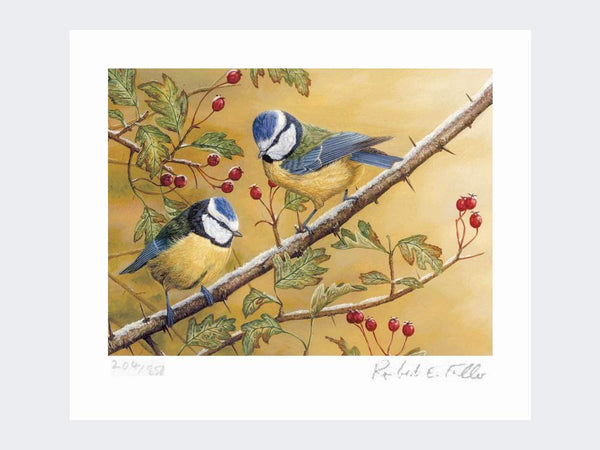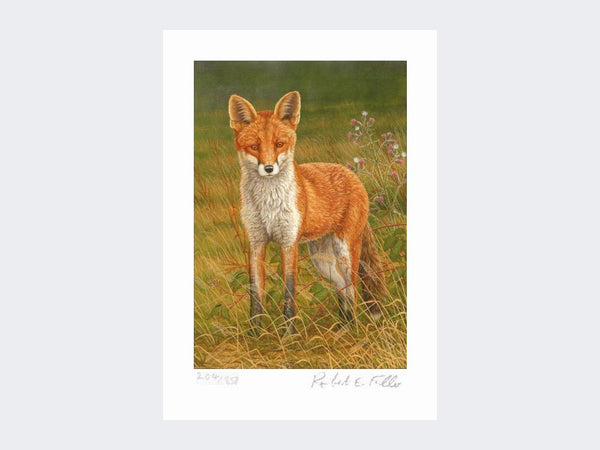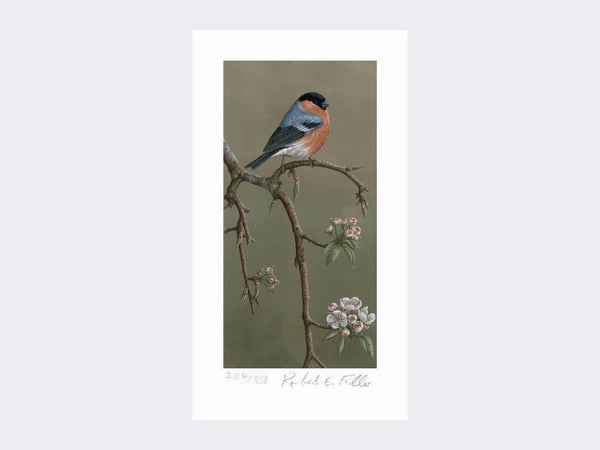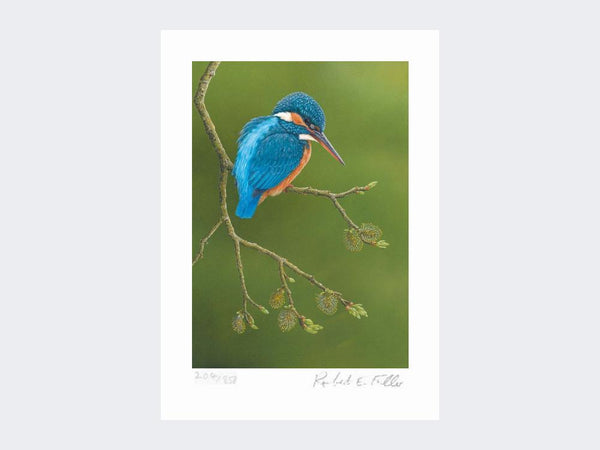Gannets are inspirational
Gannets have always fascinated me, mostly because they make such excellent subjects to paint. They are large birds with pure white feathers that finish in sleep black wing-tips. Their heads are a yellow colour that fades gradually into the neck and they have bright blue beaks and eyes. As an artist, I’ve always appreciated their graphic faces, which look like they have been drawn on with a fine black pencil line.
When to see gannets in Yorkshire
Gannets are out at sea for most of the year, but from March onwards, pairs start to arrive back to their birthplace to begin an elaborate courtship with partners to whom they remain faithful for life.
Gannet courtship behaviour
This ritual begins with a bow. The pair will lower their heads to each other and then raise their beaks skywards, their bodies forming a perfect point, before they settle down to preen each other tenderly.
Gannets dive at alarming speeds
The UK's largest seabird, this bird is built for life at sea. It has an impressive 6ft wingspan and an aerodynamic shape which looks striking against a blue sky. Gannets reach speeds of up to 60mph as they dive down from heights of up to 30m, their wings held out like daggers as they drop.
Gannet bubble wrap

Inspired by gannets in Yorkshire
Gannets nest in fantastic numbers at a colony at RSPB Bempton, here on the East Yorkshire coast. The recent population boom here was a tremendous success story. It began with just a handful of pairs back in the 1980s and has grown to the astonishing 11,000 pairs that now cling along the cliff edges. The best place to see one is a rocky arch called Staple Newk. The colony at Bempton Cliffs, an RSPB-owned reserve, is actually now the biggest mainland colony in the British Isles. I'm so lucky to have it right on my doorstep.When I visited Bempton recently, the noise coming from the colony was deafening. Gannets swirled around the colony overhead, to-ing and fro-ing from hunting missions at sea. The birds were packed so tightly together on their rocky home that it was a wonder they could squeeze their large, cumbersome frames on to the small ledges where they nest. Each nest was just pecking distance apart from its neighbour. But the proximity of these nests provides security to the whole colony, protecting the chicks from marauding gulls which fly overhead looking for an easy meal.
Inspired by gannets in Scotland
For me, the only disadvantage to this incredible sight is the vantage point. Although it is possible to get some eye-level flying shots of gannets, at Bempton you look down from the cliff top on to the colony quite some distance further below. So recently I traveled up to the Bass Rock in the Scottish borders, home to a staggering 60,000 gannets, to see if I could get any better shots. The Bass Rock is about 1.5 miles offshore from North Berwick and has a distinctive in shape. From a distance, it looks like a large snow-covered boulder but the white sheen is actually gannets, and guano.

Summer is the best time to watch gannets
March is the time to watch gannets. Visit the RSPB Bempton Cliff website for more information and a map. It is also possible to take a seabird cruise to Bempton Cliffs, where you get to see gannets swoop, swirl, and dive for food around the boat. Call 01262 422212 for more information or to book. For more information on the Bass Rock and to book a boat trip, visit the Scottish Sea Bird Centre.
After watching gannets, visit my gallery
The Robert Fuller Gallery, Fotherdale Farm, Thixendale Y017 9LS
If you are going to watch puffins at Bempton Cliffs, my gallery is just a half-hour drive away along the A166 towards York and makes a lovely addition to your day out. You can see my paintings of puffins alongside photographs, limited edition prints and more paintings of wildlife from around the world.
Paintings inspired by gannets
Gannets Sky Pointing | Original Acrylic Painting | Shop here


